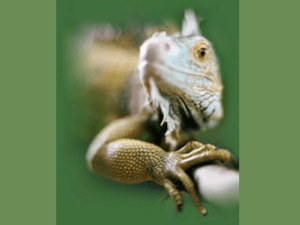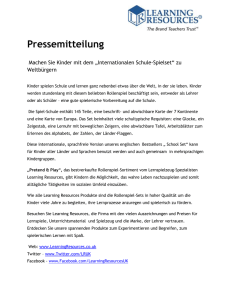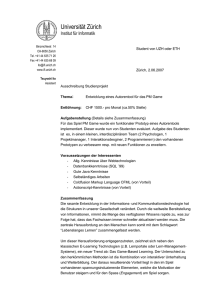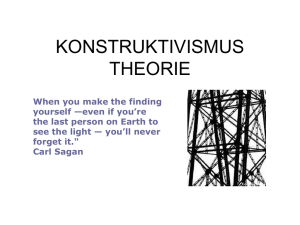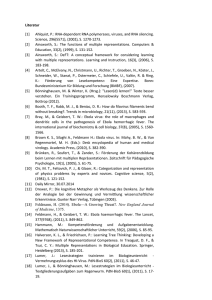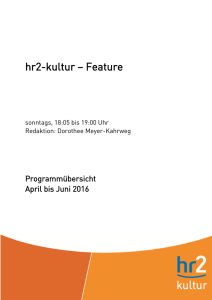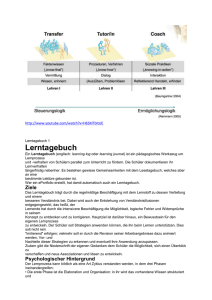Vorlesung 1
Werbung
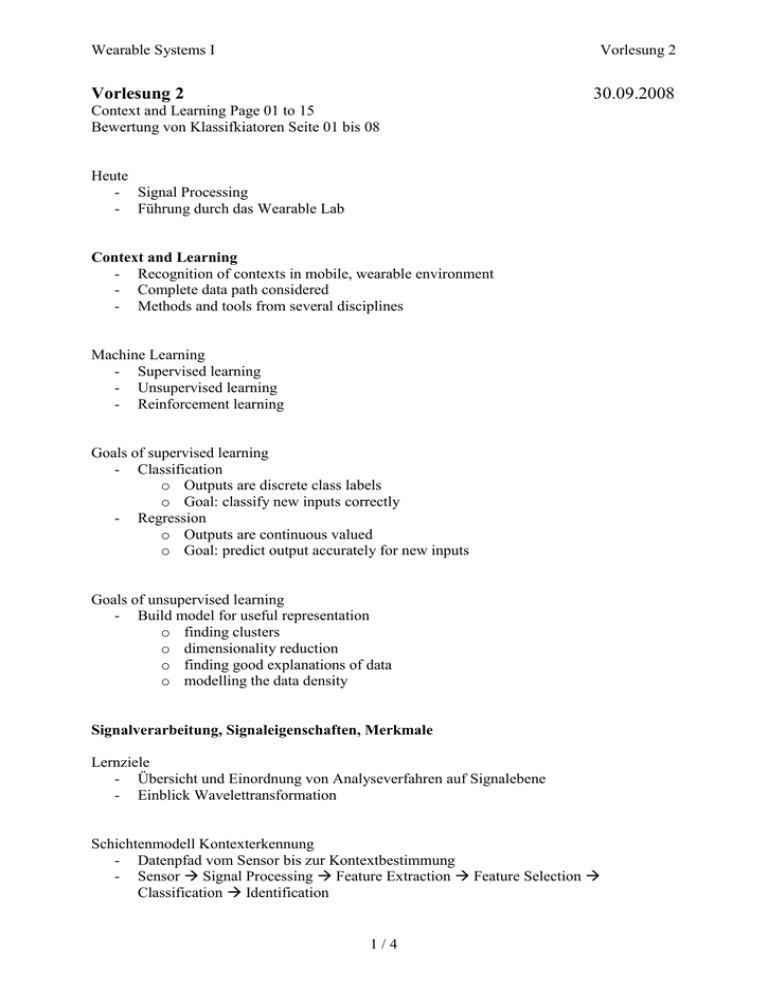
Wearable Systems I Vorlesung 2 Vorlesung 2 30.09.2008 Context and Learning Page 01 to 15 Bewertung von Klassifkiatoren Seite 01 bis 08 Heute - Signal Processing - Führung durch das Wearable Lab Context and Learning - Recognition of contexts in mobile, wearable environment - Complete data path considered - Methods and tools from several disciplines Machine Learning - Supervised learning - Unsupervised learning - Reinforcement learning Goals of supervised learning - Classification o Outputs are discrete class labels o Goal: classify new inputs correctly - Regression o Outputs are continuous valued o Goal: predict output accurately for new inputs Goals of unsupervised learning - Build model for useful representation o finding clusters o dimensionality reduction o finding good explanations of data o modelling the data density Signalverarbeitung, Signaleigenschaften, Merkmale Lernziele - Übersicht und Einordnung von Analyseverfahren auf Signalebene - Einblick Wavelettransformation Schichtenmodell Kontexterkennung - Datenpfad vom Sensor bis zur Kontextbestimmung - Sensor Signal Processing Feature Extraction Feature Selection Classification Identification 1/4 Wearable Systems I Vorlesung 2 Bewertung von Klassifikatoren: Confusion Matrix, ROC-Graph Motivation - Bewertungsmassstab (Klassifikationsergebnisse Vorhersage) - Accuracy: o Problem: Z.B. sehr viele negative Ergebnisse, ganz wenige Positive. Hohe accuracy, auch wenn nur die negativen Ergebnisse richtig erkannt werden o Differenziert nicht zwischen Fehlertypen Confusion Matrix, ROC Graph Confusion Matrix - unterscheidet zwischen verschiedenen Fehlertypen - bei n Klassen n 2 Matrix - für ein 2-Klassenproblem: Aktuell positiv Vorhersage positiv TP (true positive) Vorhersage negativ FN (false negative) - TPn P y 1, t 1 - FPn P y 1, t 1 - FNn P y 1, t 1 - TNn P y 1, t 1 - Accuracy AC - TP TN TP TN FP FN TP Recall REC TP FN TP Precision PRE TP FP TN Specificity SPE TN FP REC PRE f-measure (f1-measure) F 2 REC PRE Mutual Information I y; t P y, t log 2 y t Aktuell negativ FP (false positive) TN (true negative) P y, t P y P t ROC-Graph - Relative Operating Characteristic - True Positive rate vs. False Positive rate Kurve - Perfekt wäre (0, 1), d.h. alle Positiven und alle Negativen werden richtig erkannt. - Je grösser die Fläche unter der Kurve, desto besser der Klassifikator 2/4 Wearable Systems I Vorlesung 2 Qualification in continuous Data Streams: the Null Class Challenge - discrimination of relatively rare activities form a default ‘null’ activity which covers the majority of time in the data - often ill-defined, fragmented and variable class boundaries <Jump back to: Signalverarbeitung, Signaleigenschaften, Merkmale> Signale - Sensorsignale o Datenaufnahme und erste Vorverarbeitung o Signalkonditionierung - Segmentierung o Trennung wichtiger Abschnitte eines Signals, um Muster oder Objekte vom Hintergrund zu trennen o Abschätzung von Grenzen anhand der erwarteten Muster - Signaleigenschaften, Merkmale, Features o Reduktion des Informationsgehaltes o Übergang von Signalen zu Merkmalstupeln o Häufig benutzt in der Aktivitätserkennung Mittelwert RMS Varianz Standardabweichung Normalisiertes Signal (Mittel = 0, Varianz = 1) Kovarianz Median Schwelle Anzahl Schwellensprung (crossing) Max-, Min-Werte Differenz min-max Ableitungen … Frequenzbereich, Signaltransformation Feature Selection - Given D available features in feature set Y. Select out of the feature set Y the k-best features which maximise the cost function J - Motivation o Curse of dimensionality o Reduce the effort in the classification - Search effort D o A complete search involves combinations for a fixed value of k out of D k features and 2D combinations o Heuristic methods are necessary to reduce the effort 3/4 Wearable Systems I - - Vorlesung 2 Methods: Filter- and wrapper-methods Filter methods o Max-Dependency o Max-Relevance o Min-Redundancy o Advantage Fast execution Generality: not tailored for a specific classifier o Disadvantage Tendency to select large feature sets Wrapper methods o Selection of features is controlled by the classification results. o Genetic Algorithm (GA) o Simulated Annealing o Greedy Hill Climbing Wrapper Method: Greedy Hill Climbing Methods - Sequential Forward Selection (SFS) o Best results when optimal subset has a small number of features - Sequential Backward Selection (SBS) - Sequential Forward Floating Selection (SFFS) - Sequential Backward Floating Selection (SBFS) 4/4

